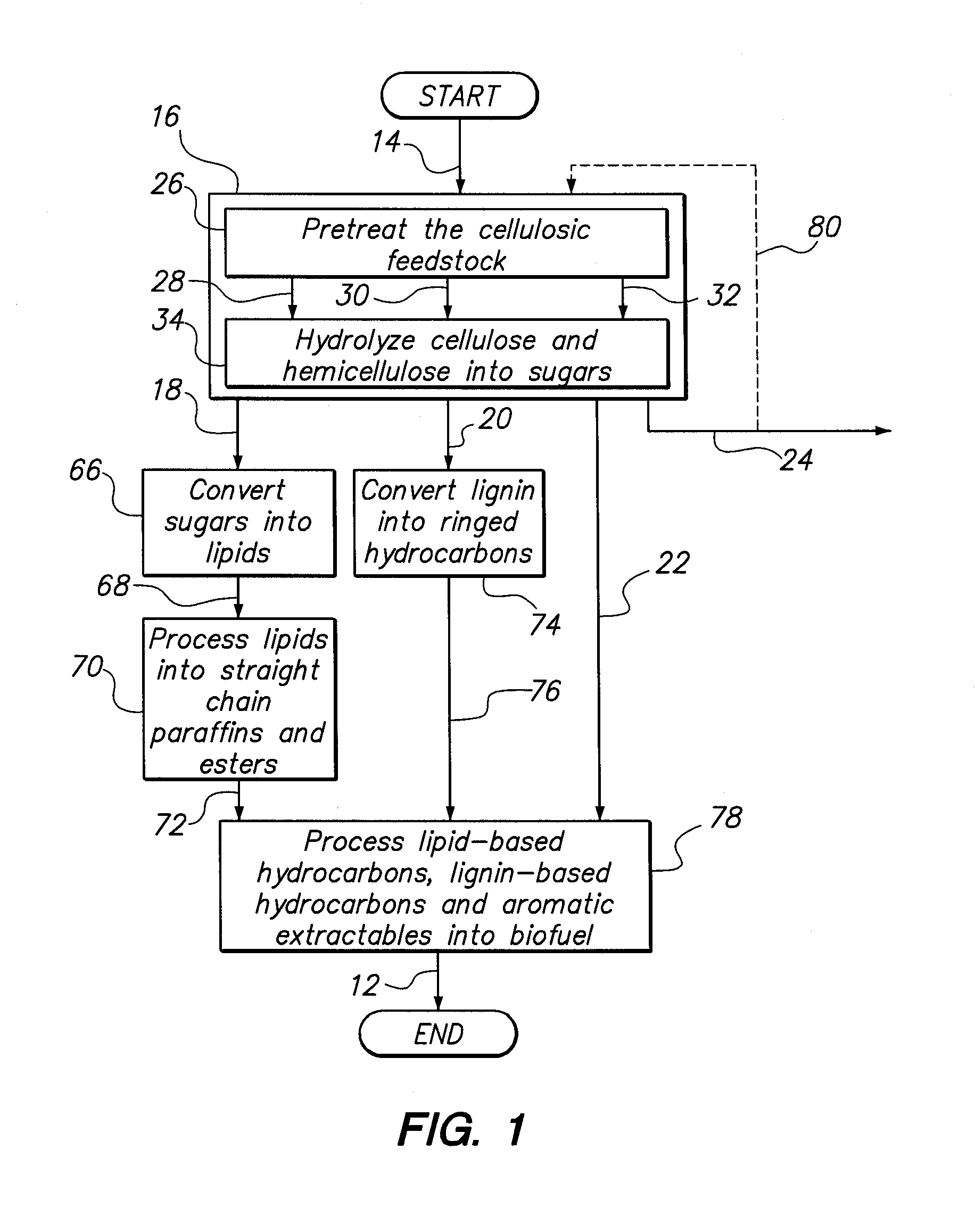Method and system for microbial conversion of cellulose to fuel
a technology of cellulose and cellulose feedstock, which is applied in the field of biofuel production, can solve the problems of increasing the and achieve the effects of less energy-intensive process, reduced refining amount, and increased fuel energy per pound of cellulosic feedstock
- Summary
- Abstract
- Description
- Claims
- Application Information
AI Technical Summary
Benefits of technology
Problems solved by technology
Method used
Image
Examples
Embodiment Construction
[0013]Referring initially to FIG. 1, a method for producing biofuel (indicated by arrow 12) from cellulosic biomass feedstock (arrow 14) is illustrated. Importantly, the method optimizes the use of inputs and reduces the losses of materials and energy. Generally, the feedstock 14 is comprised of biomass from a single species or from a variety of plant life. For instance, the feedstock 14 may include agricultural residues, such as corn stover, saw dust, rice hulls, distiller grains, straws, bagasse, cotton gin trash, palm oil wastes, etc. Also, the feedstock 14 may comprise energy crops grown specifically for their biomass, such as grasses, sweet sorghum, fast growing trees, etc. Further, the feedstock 14 may comprise waste products of paper, such as recycled newspaper, paper mill sludges, pulp mill waste, sorted municipal solid waste, etc., and / or green wastes, such as leaves, grass clippings, shrimp wastes, vegetable and fruit wastes, etc.
[0014]As shown in FIG. 1, the method commen...
PUM
| Property | Measurement | Unit |
|---|---|---|
| energy | aaaaa | aaaaa |
| chemical energy | aaaaa | aaaaa |
| energy content | aaaaa | aaaaa |
Abstract
Description
Claims
Application Information
 Login to View More
Login to View More - R&D
- Intellectual Property
- Life Sciences
- Materials
- Tech Scout
- Unparalleled Data Quality
- Higher Quality Content
- 60% Fewer Hallucinations
Browse by: Latest US Patents, China's latest patents, Technical Efficacy Thesaurus, Application Domain, Technology Topic, Popular Technical Reports.
© 2025 PatSnap. All rights reserved.Legal|Privacy policy|Modern Slavery Act Transparency Statement|Sitemap|About US| Contact US: help@patsnap.com



